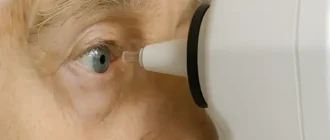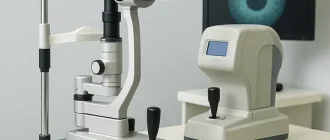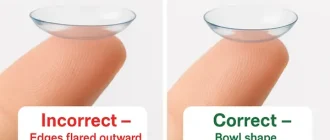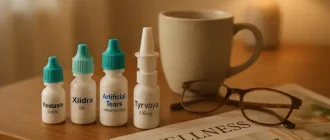Wearing expired contact lenses can lead to a wide range of eye health issues. Over time, contact lenses degrade and lose their structural integrity. This may not be visible to the naked eye, but the risk is real. Expired lenses may:
- Become brittle or warped, leading to poor fit and discomfort.
- Accumulate deposits, even if sealed, which can irritate the eyes.
- Carry a higher risk of bacterial contamination due to deteriorated packaging.
A 2023 survey by the American Optometric Association found that 17% of contact lens users admitted to using expired lenses at least once—despite 83% being aware of the potential health risks.
Common Eye Conditions Caused by Wearing Expired Contacts
This chart illustrates the prevalence of common eye conditions associated with wearing expired contact lenses. Redness and irritation top the list, followed by dry eye and infections. These issues highlight the importance of proper lens hygiene and timely replacement to maintain ocular health.
Why Do Contact Lenses Expire?
Expiration dates on contact lenses are not arbitrary. Manufacturers test lenses for safety and effectiveness only up to a specific date. Beyond that:
- The sterilized solution inside blister packs may lose potency. This can reduce its ability to keep the lens sterile, increasing the chance of bacterial contamination. You might notice a cloudy or discolored solution as a warning sign.
- Packaging seals may weaken, increasing contamination risks. If the seal isn’t perfectly airtight, microorganisms can enter. If the packaging looks puffed, dried out, or has even slight damage, do not use the lens.
- Lens material may chemically degrade. Over time, the lens may lose flexibility or become misshapen. You might feel discomfort, excessive dryness, or notice the lens not sitting right on the eye—these are your red flags.
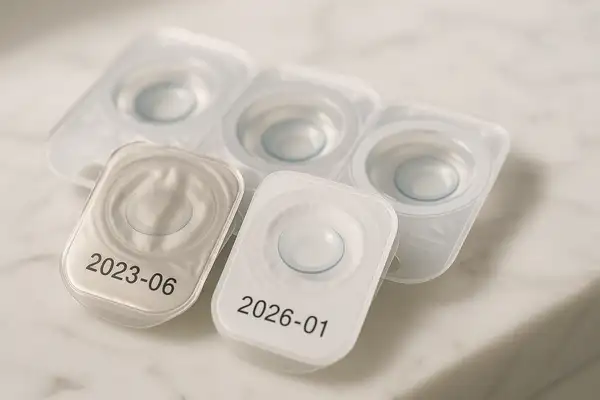
Soft lenses, especially those made of hydrogel or silicone hydrogel, are more susceptible to aging effects.
What Are the Risks of Wearing Expired Lenses?
Expired contact lenses can cause several eye problems, including:
| Risk | Description |
|---|---|
| Eye irritation | Burning, stinging, or gritty sensation. |
| Allergic reactions | Redness, itching, and watery eyes. |
| Eye infections (e.g., keratitis) | Serious infections that can damage the cornea and impair vision. |
| Corneal ulcers | Open sores on the eye, potentially leading to vision loss if untreated. |
| Decreased oxygen flow | Aged lenses may block oxygen, leading to dry or damaged eyes. |
In a medical case from Arizona, a 27-year-old woman developed bacterial keratitis after wearing a pair of monthly lenses that had expired two years prior. She required hospitalization and multiple rounds of antibiotic eye drops.
How Are Contact Lenses Dated and Stored?
Every contact lens package includes an expiration date, usually printed in the format: YYYY-MM. It represents the final month the product can be safely used, assuming it’s stored correctly. Proper storage conditions include:
- Temperatures between 41°F and 86°F (5°C to 30°C)
- Avoiding direct sunlight or humidity
If a lens has been removed from its original packaging, even if not used, it should not be kept beyond the recommended wearing time.
Diagnostics: How to Spot a Bad Lens
Recognizing a compromised or expired lens can prevent complications. Here are some key diagnostics:
| Method | Description | Accuracy (1-10) | Avg. Cost (USD) |
|---|---|---|---|
| Visual inspection | Look for discoloration, dryness, or tears | 5 | Free |
| Discomfort during wear | Pain or stinging may suggest a problem | 6 | Free |
| Slit-lamp eye exam (by optometrist) | Detects irritation, scratches, or infection from bad lenses | 9 | $60–$120 |
| Microbial culture (if infection suspected) | Confirms bacterial or fungal contamination | 10 | $150–$300 |

What Are the Safe Alternatives?
If you’re out of fresh lenses, don’t reach for an expired pair. Instead:
- Use prescription glasses until new lenses arrive. For instance, a college student in Ohio switched back to glasses for a week after realizing her lenses were a month past expiration—and her dry eyes quickly improved.
- Order same-day delivery lenses from reputable online retailers. One New York office worker used an online retailer that offered same-day shipping after losing a lens during lunch—her new set arrived by evening.
- Visit a local optometry clinic with emergency supply options. A 45-year-old teacher from Texas forgot her lens case on a business trip. She walked into a local clinic and received a same-day fitting and a temporary pair, avoiding the risk of using unsanitary lenses.
Brands like Acuvue Oasys, Biofinity, and DAILIES Total1 offer dependable, FDA-approved lenses. Always verify the expiration date when purchasing.
Contact Lens Innovations and Safety Tips
Thanks to newer materials and manufacturing, modern lenses are safer than ever—but only if used as directed. Notable innovations include:
- Water gradient technology: Enhances comfort by mimicking the eye’s natural moisture barrier, reducing dryness throughout the day. For example, DAILIES Total1 lenses feature a silicone hydrogel core that retains moisture with nearly 100% water content at the surface—ideal for people who experience dryness after several hours of wear.
- UV-blocking lenses: These lenses provide added protection against ultraviolet rays, which are linked to cataract formation and other long-term eye damage. Acuvue Oasys, for instance, blocks about 96% of UVA and 99% of UVB rays. While they don’t replace sunglasses, they add an extra layer of defense, especially for outdoor enthusiasts.
- Smart contact lenses (in development): Researchers at companies like Google and Sensimed are developing lenses that do much more than correct vision. One prototype includes a sensor to monitor intraocular pressure in glaucoma patients, while another experimental version aims to track glucose levels in diabetic users via tears.
Pro safety tips:
- Never “top off” old solution, as it can harbor bacteria and reduce disinfecting efficacy.
- Replace your lens case every 3 months to avoid microbial buildup.
- Follow the 20-20-20 rule: every 20 minutes, look at something 20 feet (6 meters) away for 20 seconds to reduce digital eye strain.
Editorial Advice
Reyus Mammadli, healthcare advisor, recommends avoiding the temptation to reuse or extend the life of contact lenses past their expiration date. “Your eyes are delicate. Just like you wouldn’t drink expired milk, don’t wear expired lenses. The cost of new contacts is far less than treating an eye infection or vision loss.”
Also, check your lens packaging regularly, and set calendar reminders to reorder lenses before they run out.
References
- American Optometric Association. “Contact Lens Health Week 2023 Survey Results.” https://www.aoa.org
- U.S. Food and Drug Administration. “Soft Contact Lenses.” https://www.fda.gov/medical-devices/contact-lenses
- Centers for Disease Control and Prevention (CDC). “Healthy Contact Lens Wear and Care.” https://www.cdc.gov/contactlenses
- Johnson & Johnson Vision. “Acuvue Oasys Product Information.” https://www.acuvue.com
- Alcon. “DAILIES Total1 Water Gradient Contact Lenses.” https://www.myalcon.com
- Sensimed. “Smart Contact Lenses for Glaucoma Monitoring.” https://www.sensimed.ch

